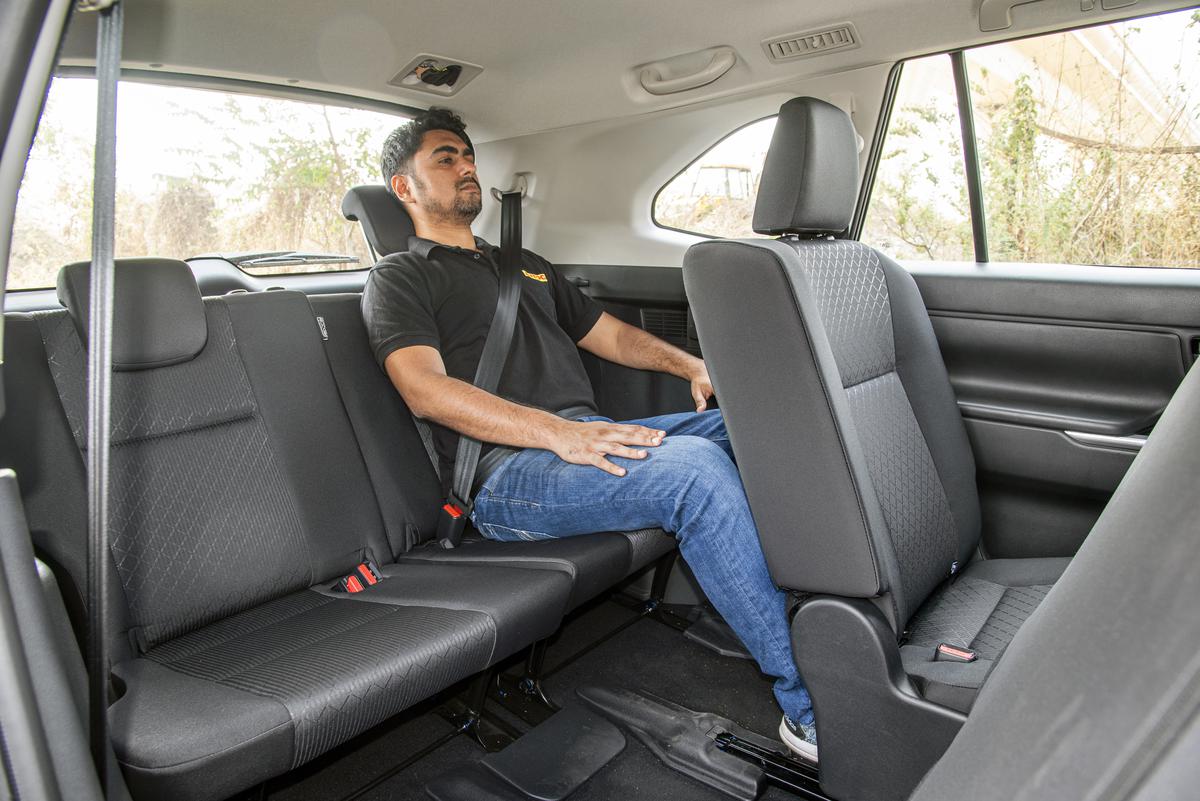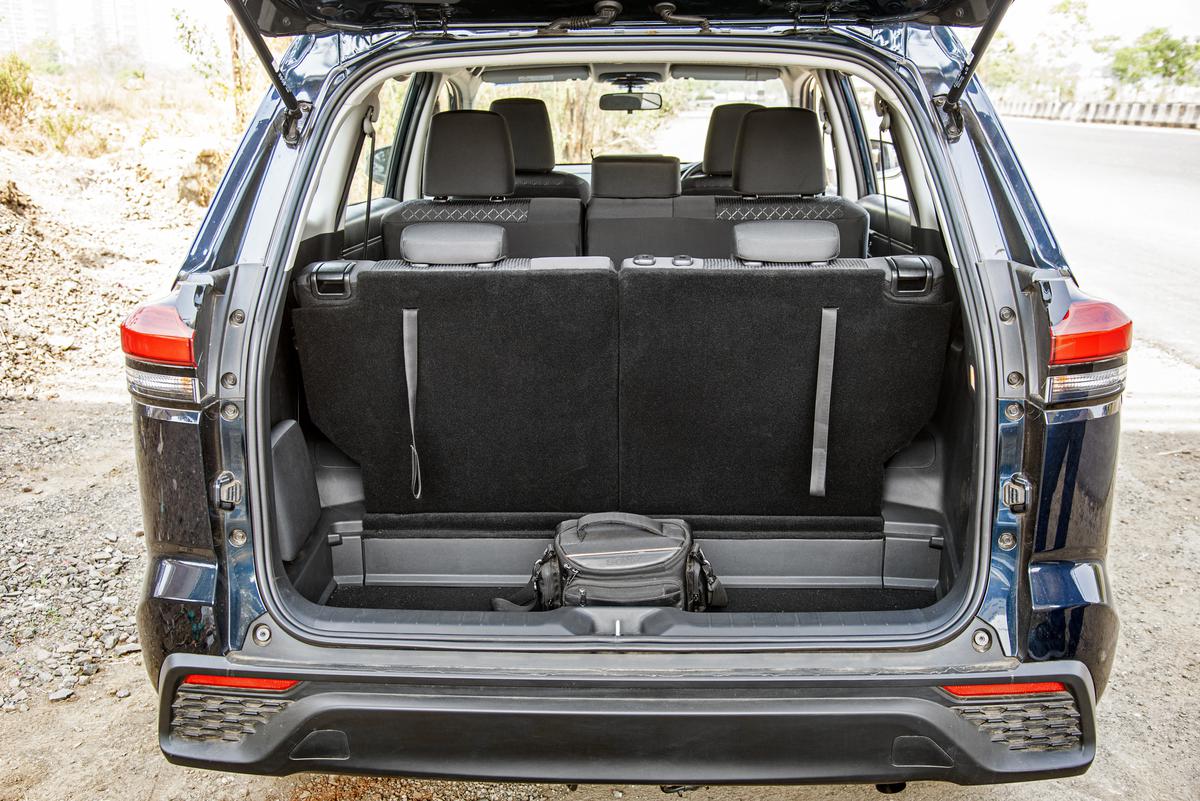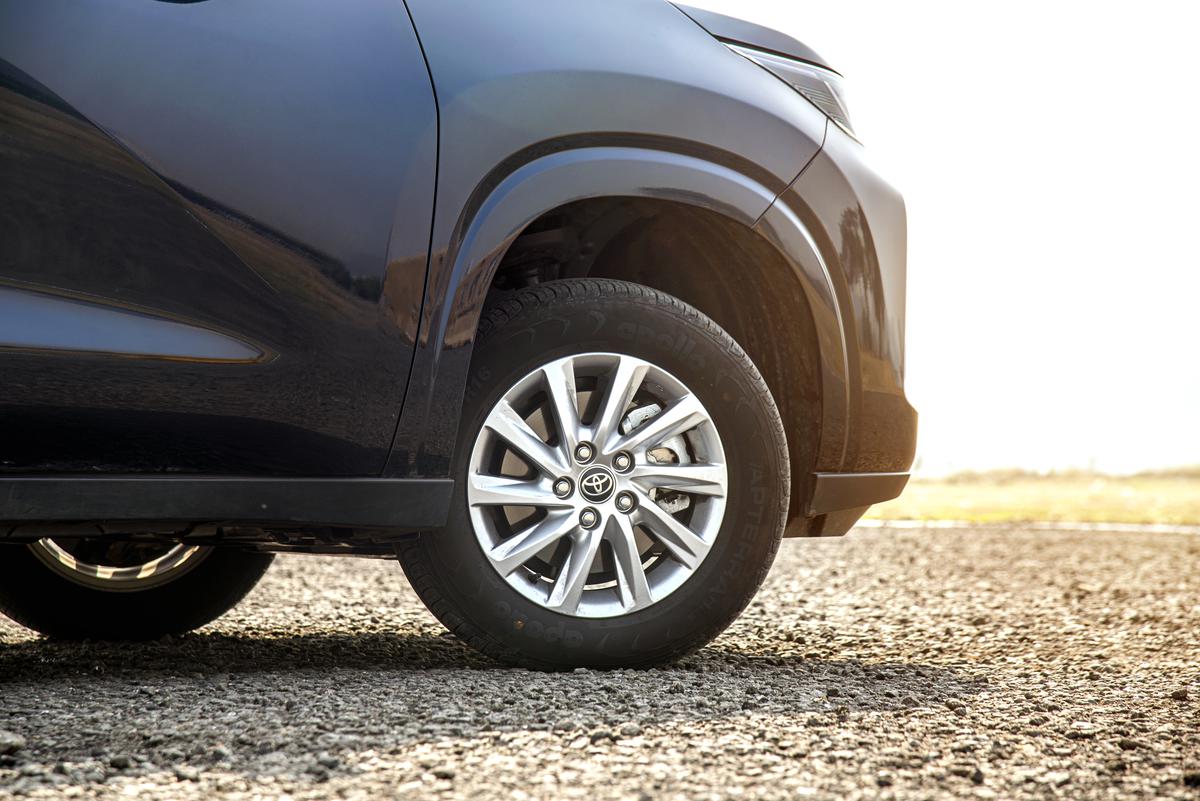Review
The Toyota Innova Hycross petrol automatic lures you in with its affordability, especially when compared to the very impressive hybrid variant. Costing between ₹18.55 lakh and ₹19.45 lakh (ex-showroom) for the petrol variant, it sits a full segment below the hybrid, which is priced between ₹24.76 lakh and ₹29.72 lakh. So with the huge savings, the petrol Highcross should easily be the pick of the range, right?
Toyota has made the Hycross petrol available only in the lower-spec G and GX variants, hence, it lacks some of the premium touches of the Hycross hybrid like silver highlights and garnishes. Despite all this, it still comes across as a thoroughly modern and premium iteration of the Innova. It looks attractive with its long, flat bonnet, slim Fortuner-like LED headlamps and large front grille.
Apart from the design cues and character lines, it gets square wheel arches and plastic body cladding, which add a lot of muscle to its styling. However, it has skinny 205/65 R16 tyres, which cause big gaps in the arches. This disproportionate wheel-to-body ratio makes it comical from certain angles.
Compared to the Crysta, the Highcross is 20 mm longer and wider, and has a 100 mm longer wheelbase; Make it a big car. Since it is based on the TNGA-C ‘high’ monocoque platform, it weighs 1,545 kg, making it 205 kg lighter than the ladder-frame petrol automatic Crysta. However, unlike the petrol Crysta, which was powered by a 166hp 2.7-litre petrol engine mated to either a manual or a six-speed torque converter, the Hycross is powered by a smaller 2.0-litre petrol engine mated only to an automatic (CVT) ) is combined with. ,
While the hybrid variant gets a brown and black interior theme with liberal use of padded material, the petrol’s cabin is a sea of black with rudimentary hard plastic and a plethora of dummy buttons. Also, the black color accentuates all the fit-finish flaws on the inside. The rotary manual air conditioner controls feel like they’ve been lifted from a budget car from the 90s, and are not appropriate for a car of this price.
To its credit though, the materials feel built to last – just like the Crysta’s – and because the cabin floor isn’t as high, getting in and out is convenient. The seats are big and comfortable too. Toyota’s got the support and cushioning spot on, and the sheer space is easily the best on offer in each of the three rows.

The version we tested was an 8-seater with a bench in the middle row, which can easily accommodate three adults thanks to the width of the cabin. The long front-to-back travel of the middle row, as well as a recline function for the backrest, make it comfortable, especially for chauffeur-driven folks. The armrests feel a bit flimsy as they drop down to the seat base, like the Honda City, and window shades should have been included for the rear doors to block out the sunlight.
Even though the middle row doesn’t drop forward, it slides and opens an area wide enough to reach the third row. With an adjustable backrest recline and ample space available, even adults can sit in the third row for long drives without looking worn out.
Special mention needs to be made to the effectiveness of the air conditioner and the manual rear blower, which cools down the cabin quickly, even when it’s 40 degrees outside!
Since the petrol automatic is available only in the entry-level variant as a 7 or 8-seater, it only gets the basics like auto LED headlamps, 16-inch alloys, one-touch up and down for all four power windows, rear wiper Are. and washer, ESP, 8-inch touchscreen with wired Android Auto and Apple CarPlay, rear air conditioning, and a reverse camera.
However, it misses out on many features like side and curtain airbags, powered front seats, cruise control, digital instrument cluster, JBL speakers, automatic climate control, powered tailgate and panoramic sunroof, which are only available on the hybrid variant.

The talking point of this review is the 173hp, 2.0-litre naturally aspirated petrol engine mated to a continuously variable transmission (CVT), with power sent to the front wheels. Right from the start, this four-cylinder unit impresses with its refinement and vibe-free nature. It builds up to speed smoothly and pulls cleanly up to 6,500rpm, feeling powerful enough to haul this 1.5 ton of people. The special thing is that it does not feel sluggish even with a full load of passengers. Its sprinting capability is also impressive – it accelerates from 0-100kph in 11 seconds and even reaches a top speed of 175kph.
What does let down the drive experience is its CVT which whines and whines in protest every time you twist your right foot to demand more power. As the CVT feels tense, drivers will be persuaded to adopt a calmer driving style with gradual accelerator input. Speaking of which, the Hycross petrol gets an Eco mode, which slackens the responses in the interest of fuel efficiency; However, at full throttle, the performance is similar in Eco and Normal modes.
Driving in Eco mode, the petrol-automatic Highcross – in our real-world fuel efficiency test – returned just 6.9kpl in the city and 12.4kpl on the highway, averaging just 9.7kpl. The inclusion of the engine stop-start feature allows fuel consumption to be kept under control during idling, thereby improving efficiency in stop-go scenarios.
Compared to the body-on-frame Innova Crysta, the monocoque construction of the Highcross has had a positive impact on the way it drives. Body control is good, roll is well contained, and the Highcross feels far stiffer and tighter than the Crysta. Its lightweight electric power steering is a breeze, a complete departure from the Crysta’s heavy hydraulic unit. Also, with the Highcross, Toyota has opted for a narrower track in the interest of a tighter turning radius, which should make maneuvering and parking this large MPV easier.
There’s an inherent stiffness to its suspension, and it doesn’t feel as absorbent as the Crysta when it comes to road shocks, especially at low speeds. However, it eliminates excessive body movements well, and feels planted and well-powered at cruising speeds.
The Toyota Innova Highcross petrol automatic is for those buyers who want nothing but a petrol Innova and are not willing to pay a hefty premium for the hybrid variant. It has extremely comfortable seats and feels well built, and, because of its spaciousness, its ability to comfortably carry seven or eight passengers remains unrivalled. Its light steering, smooth petrol engine and driving manners are also good, which are better than Crysta.

However, buyers spending more than ₹20 lakh for the Highcross petrol automatic will be disappointed by its rudimentary interiors, missing features and its attractively small tyres. The whiny CVT spoils the drive experience. More importantly, its low fuel efficiency could be a deal breaker for many. Lastly, with the diesel Crysta still on sale, and better value-for-money seven-seater options available at this price, the petrol automatic Highcross isn’t convincing enough, and is likely to remain a tough sell for Toyota.